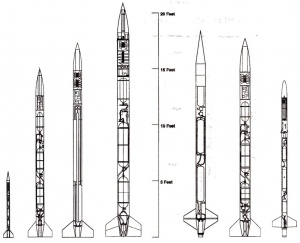by the Reaction Research Society
The Reaction Research Society met on September 11, 2020, by teleconference. Several members called in from out of state. After calling the meeting to order and the reading of the treasurer’s report, we began to discuss events to come and those in planning.

MTA WORK EVENT 10/3/2020
The next event at the Mojave Test Area will be on Saturday, October 3rd. This will be a work event to repair our large adjustable rail launcher, remove tumbleweeds and brush from around our site, fix the two cut strands of barbed wire at our front gate, clean off corrosion from several areas and also potentially replace the bent panel on the vertical thrust stand. Osvaldo is leading the work event and all members are encouraged to come out. In addition to bringing sunscreeen, proper desert attire and footwear, bringing work gloves will be very useful.



As with all events at the MTA, social distancing and facemasks are required by all attendees at this event. Newcomers must request permission to attend and sign our indemnification waiver in advance of their arrival. See our website for these forms and submit them to the RRS president.
At this same event, we may also have a few launches if members are ready to do so. Dave Nordling was appointed to be the pyro-op in charge for this day. Wolfram Blume had planned to attempt his first flight of the two-stage Gas Guzzler to verify the staging and recovery systems. The nitrous-oxide hybrid motor is also ready for another launch attempt at this event.
Bill Inman also plans to join us at the MTA to conduct some tests of his solar concentrator to be used with his next generation steam rocket still in build.
NEW RESTROOM FACILITY AT THE MTA
Last year, the executive council set priorities for improvements at the Mojave Test Area. At the top of the list was building a new restroom facility which would offer our guests greater comfort than the current facility.
Larry Hoffing and Dave Nordling have begun to approach potential contractors willing and able to build a modest facility at our site. No formal proposals have yet been received yet but the society expects to have more to share in the coming month. With the hot summer months receding and the cooler temperatures of autumn approaching it is a perfect time to begin this project.
Given our modest budget, we are asking for donations to help the society make this much asked for and much needed improvement. Donations to the RRS are tax deductible as we are a registered 501(c)3 educational non-profit group in California. Our Paypal link is one our website and if there are any questions please contact the RRS president or any member of the executive council.
2021 RRS SYMPOSIUM
It was recommended that we try to set a firm date for the 2021 RRS Symposium with the Ken Nakaoka Community Center on a Saturday in late March. Although it is not certain if the symposium can be held, preparation for the symposium can take many months. Frank was going to see if a tenative date could be established only for planning purposes. If COVID-19 restrictions in Los Angeles were lifted to allow our symposium, we would have little time for advanced planning. There’s liitle to lose in scheduling the event and postponing if it becomes necessary.
IN CLOSING
Contact the RRS secretary with questions. Next meeting will be held virtually on October 9, 2020, 7:30pm. Contact the RRS secretary for details.












